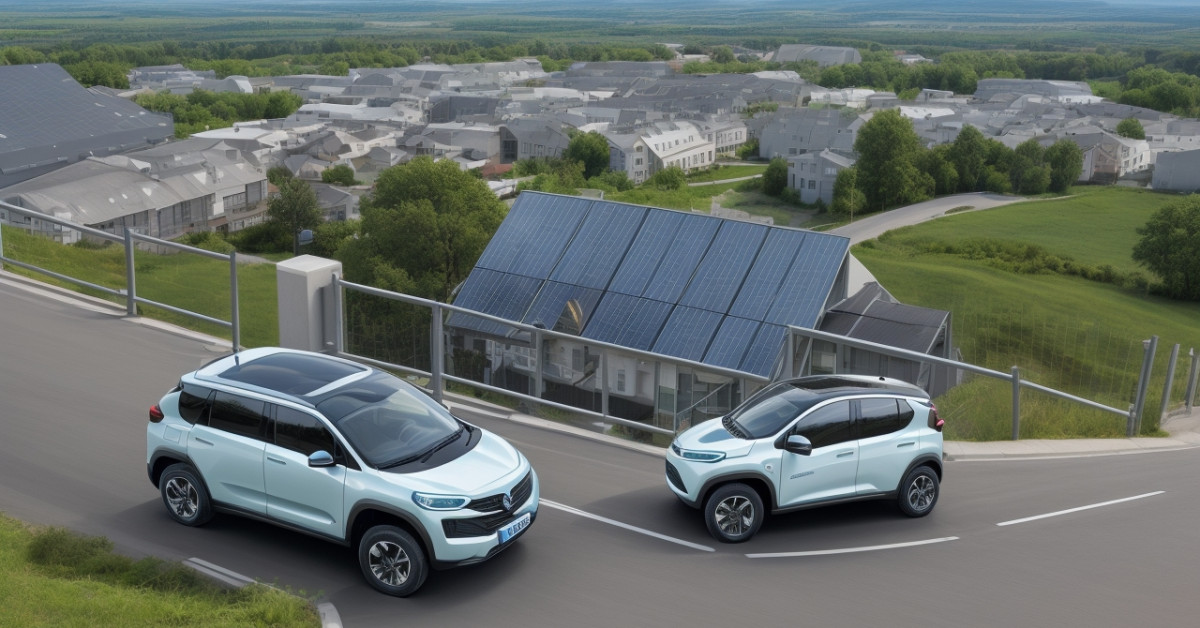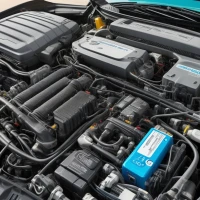In a world rapidly shifting towards sustainability, electric vehicles (EVs) have emerged as champions of eco-friendly transportation. But the heart of every EV’s ability to effectively use its stored energy lies in its energy management system (EMS). This sophisticated technology has become the cornerstone of modern electric mobility, aiming to revamp our travel experiences while minimizing our carbon footprint.
The adoption of electric vehicles is expanding rapidly across the globe as consumers seek alternatives to conventional gasoline-powered cars. This surge in EV popularity calls for an intricate understanding of the systems that make them viable and efficient alternatives. The EMS in an electric vehicle is not just a feature; it’s a revolutionary advancement that orchestrates the vehicle’s energy resources to optimize performance, durability, and range.
As we explore the pivotal role and intricate workings of the energy management system in electric vehicles, we delve into how this innovation is unequivocally revolutionizing the ride, ensuring each kilowatt is used to its fullest potential.
Related article; if you damage an unattended vehicle you must
Understanding Energy Management Systems in EVs
Electric vehicles are marvels of engineering, combining various technologies to facilitate a smooth, silent, and sustainable ride. At their core is the EMS, overseeing numerous functions. From regulating battery temperatures to managing the power distributed among the vehicle’s electric components, an EMS ensures efficiency and longevity of the EV’s power source – the battery pack.
Related article; car wash signs
The Core Functionality of EMS
The primary objective of an EMS is to maintain balance within the EV’s electrical ecosystem. This involves:
Related article; best car pick up lines
- Monitoring: Continuously tracking the state of charge (SoC) and the state of health (SoH) of the battery.
- Controlling: Regulating the energy flow to and from the battery during charging and discharging phases.
- Optimizing: Ensuring that energy consumption is optimized for various driving conditions and preferences.
Battery Management Systems (BMS): The Backbone of EMS
Within the broader context of the EMS lies the Battery Management System (BMS), playing the critical role of safeguarding the vehicle’s batteries. It prevents them from operating outside safe limits by monitoring temperature, voltage, and current, therefore preventing hazardous situations such as overheating or overcharging.
Related article; bill harris used cars
The Impact of EMS on EV Efficiency
An efficient EMS directly influences the EV’s performance. It ensures minimal energy wastage, allowing for:
Related article; amy roloff car accident
- Extended Battery Life: By avoiding stressful conditions for the battery, the EMS prolongs its service life.
- Increased Range: Effective energy management translates to more miles per charge, a crucial factor for EV adoption.
- Enhanced Safety: The EMS mitigates risks associated with battery failures, which could lead to accidents or malfunctions.
The Technological Marvel Behind EMS
Beneath the surface, the energy management system in an electric vehicle is a technological wonder, incorporating sophisticated algorithms and state-of-the-art hardware to seamlessly manage the vehicle’s energy needs.
Related article; $ cash for junk cars without title
EMS and Advanced Electronics
The EMS relies heavily on embedded electronics and sensors that provide real-time data critical for its operation.
Related article; Top non-electric cars
- Precision Sensors: These collect data on various parameters, including temperatures, voltages, and currents.
- Microcontrollers: At the heart of the EMS, they process the sensor data using complex algorithms to make instantaneous decisions.
Data Analytics and EMS: A Synergistic Relationship
Data analytics plays a supporting role in enhancing the EMS by:
Related article; The best performance cars in
- Predicting future energy requirements based on past usage patterns.
- Adjusting energy distribution for maximum efficiency under current driving conditions.
- Learning from driver behavior to anticipate energy needs.
Integration with Vehicle Systems
The EMS is not an isolated module but is intricately woven into the entire fabric of the vehicle’s systems, including propulsion, climate control, and telematics.
Propulsion System Integration
For the best driving experience, the EMS synchronizes with the motor controller, ensuring power is delivered smoothly and efficiently to the electric motor(s).
Climate Control and Energy Conservation
The HVAC (Heating, Ventilation, and Air Conditioning) system is a significant consumer of energy in EVs. The EMS dynamically adjusts HVAC operations to maintain comfort without excessively draining the battery.
Connectivity and EMS
Modern EVs come equipped with connectivity features that allow the EMS to:
- Update its algorithm via over-the-air software updates.
- Communicate with charging stations to manage the charge process smartly.
The Consumer’s Experience: How EMS Shapes the Ride
For electric vehicle owners, the EMS is a silent benefactor, shaping their driving experience in several key ways.
Driving Range Anxiety: A Concern of the Past
The sophisticated energy management system lends drivers peace of mind by maximizing the driving range, thereby reducing the often-cited ‘range anxiety’.
- Dynamic Range Estimates: EMS provides more accurate predictions of the remaining range based on real-time energy usage patterns.
Charging: A User-Centric Approach
Through regulated charging mechanisms, the EMS ensures battery health while also considering user convenience.
Smart Charging Features
- Scheduled Charging: Allowing owners to charge their EVs during off-peak hours, saving on electricity costs.
- Condition-Based Charging: Pre-conditioning batteries for optimal charging performance.
Maintenance and Longevity
The EMS goes a long way in simplifying vehicle maintenance by:
- Monitoring battery health and advising on service needs.
- Ensuring that battery degradation happens at a slower, more predictable rate.
The Broader Impact of EMS on the Electric Vehicle Industry
With sustainability at the forefront of global agendas, the sophisticated management of energy use in EVs epitomizes the industry’s commitment to environmental stewardship.
Facilitating the Shift to Renewable Energy
Advanced EMS can adapt to the intermittency of renewable energy sources, such as solar or wind power, by managing charging times when supply is abundant.
Paving the Way for Vehicle-to-Grid (V2G) Technology
- Energy Arbitrage: The ability of EVs to sell energy back to the grid during peak demand times.
- Grid Stabilization: Using EVs collectively to act as a distributed energy resource.
The Future Outlook: Automation and AI in EMS Development
Developments in artificial intelligence and automation are set to take EMS to new heights.
AI-Powered EMS Evolution
- Predictive Energy Management: The potential of AI to make prognostic decisions based on vast amounts of data.
- Personalization: Tailoring the energy management strategy to individual driver preferences and habits.
Vehicle Autonomy and EMS
- Self-Driving Cars: The interplay between autonomous driving technology and EMS will create new paradigms in energy optimization.
Final Reflections: EMS Playing a Central Role in EV Adoption
The energy management system is undoubtedly a linchpin in the ongoing evolution of electric vehicles. As technology progresses and consumer awareness grows, the EMS will continue to play a pivotal role in making EVs not just a feasible choice but a preferred mode of transportation.
Electric vehicles equipped with sophisticated EMS promise a future of mobility that is both exciting and environmentally conscious. This potent combination of cutting-edge technology and sustainability is more than just a selling point; it’s a transformation in the essence of transportation—a revolution in every sense of the word.










